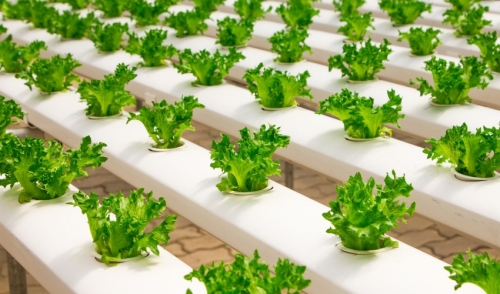Hydroponics is an innovative, efficient option for gardening, but just what is a hydroponic garden and how can you care for it properly? It is important to understand the basics of hydroponics before you dive in to your first plantings.
What Is Hydroponics?
At its simplest, hydroponics is gardening without using dirt as a growing medium. There are many advantages to this type of gardening, including…
- Year-round availability regardless of local climate or weather patterns
- Easy to do indoors if no land or outdoor garden is available
- Alternative in case soil is infertile or otherwise contaminated
- Growth rates 30-50 percent faster than traditional gardening
- Larger harvest yields with less plant energy necessary to develop roots
- Fewer pest problems and no need for excessive pesticides
- No weeding to do and no need for herbicides
With growing concern about chemical contamination and how produce may be treated before, during, and after harvest, hydroponic gardening gives you the ultimate control over what goes in your body. With hydroponics, since you know exactly how the plants are nourished and you provide all the necessary care to grow your own food. You can set up a hydroponic system anywhere, and always enjoy the tastiness of your own harvest.
Tips to Care for Your Hydroponic Garden
There are different sizes and styles of hydroponic setups, from simple drip or wick systems to more elaborate flood and pump designs. Whether you choose a simple passive hydroponic setup or a more elaborate, active cultivation method, however, all hydroponic gardens need the same basic care so the plants will thrive and your harvest will be as bountiful as possible.
Before you start hydroponic gardening, learn the differences between various setups and decide which will meet your needs best. It can be helpful to connect with other hydroponic gardeners to learn from their expertise, and there may be some trial-and-error involved when you first set up your garden. As you get going and growing, be sure to…
- Provide Adequate Light The amount of sunlight your garden requires will depend on which plants you’ve decided to grow and how large your garden may be. You could use a greenhouse with clear panels to take advantage of natural sunlight, or position a small setup near a well-lit window. Supplemental grow lights can also help you give your garden adequate light.
- Keep the Temperature Suitable The best temperature for your garden will vary based on which plants you grow, though basic room temperatures are generally suitable for most plants. Take care that your garden is not exposed to temperature extremes from drafts or vents, or that is it not subject to frosts, freezes, or other potentially damaging temperatures.
- Increase Humidity Garden plants thrive in generally higher humidity than most indoor locations, and a 50-70 percent humidity level is optimal. This is easy to achieve in a dedicated greenhouse or growing room, but it may be necessary to add a humidifier to help household setups feel more comfortable. If you use drip trays with your plants, that will also help increase the humidity.
- Keep the Nutrient Solution Clean When your nutrient solution begins to look murky, cloudy, or translucent, it should be discarded and the watering area cleaned and refilled. This will minimize algae growth and keep the solution pure to better feed every plant. While the frequency of cleaning will vary based on the size of your garden, it should generally be done 1-2 times per month.
- Test pH Regularly Different plants require different pH levels for the optimum nutrient uptake, and an unbalanced pH can stunt growth and impede the harvest. Testing the pH of your nutrient solution and growing medium daily is best to ensure it stays at the right level, and will allow you to make any necessary changes immediately to keep the balance.
- Anchor Plants if Needed Larger, more robust plants may need to be anchored to prevent them from tipping or falling as they grow. While dirt is not necessary for hydroponic gardening, many growers use sand, gravel, coir, peat, or a similar growing medium to give the roots something to grip and help stabilize the plants. Stakes, wires, or plant cages can also be used.
- Avoid Overfeeding As your plants continue to grow, it can be tempting to feed them more and more to encourage even more growth and larger harvests. Nutrition can only be taken up at a steady rate, however, and adding too much fertilizer to the growing medium can inadvertently burn roots and damage plants badly enough so they may die.
- Water Appropriately Water is essential to deliver nutrition to your hydroponic garden, but care must be taken so you don’t accidentally drown your plants. A good rule of thumb is that the roots should always be wet, but never flooded to the point where they cannot breathe. Filtered water is cleanest and best for hydroponics, and using a timer can help avoid over or underwatering.
- Monitor Plants Often Just as you need to watch plants in any type of garden, a hydroponic garden also needs careful monitoring. Watch to be sure the solution levels are adequate and there is no algae present, and inspect the plants regularly for signs of bending or breakage that would indicate a need for extra stakes or support. Any problems will be much easier to fix if they are noticed right away.
Hydroponics can seem intimidating at first. As you learn the basics of how to care for a hydroponic garden and experiment with what setup works best for your needs, however, you will be surprised at how easy and productive it can be to garden without any dirt at all.






Comments